A range of pandemic-prompted innovations have changed industry practice for good. Josephine Smit talks to those who led the way
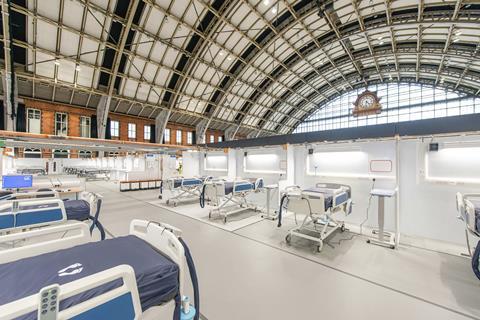
From “Build back better” to “Never let a good crisis go to waste”, politicians and business leaders have no shortage of aphorisms and slogans to apply to new ways of working in the wake of the pandemic. While for many, changes in the way they operate have been driven by two years of abnormal trading conditions, enforced lockdown closures or large-scale working from home, some working in construction had a very different experience to draw on.
They are the consultants, contractors, specialists and suppliers involved in delivering pandemic-related facilities like Nightingale hospitals and testing facilities. While others temporarily slowed or halted operations, these businesses and individuals found themselves working harder and faster than ever to respond to the emergency. Within the common and familiar foundations of the ProCure22 framework and NEC3 contract, project participants excelled and innovated in their processes and practices to deliver what was needed.
The resulting projects have, in many cases, already been dismantled, but the ways of working adopted to deliver them have left their mark. Some project participants have developed new practices, while for others the experiences have confirmed the value of approaches promoted through reports ranging from Sir John Egan’s Rethinking Construction to the government’s current Construction Playbook. At the same time, projects have highlighted the gap between the everyday and best practice, giving the broader industry much to think about.
What’s best for the project?
With six Nightingales to its credit, interdisciplinary design consultant BDP was more involved than many in pandemic projects. The ProCure 22 framework meant the practice found itself working with partners it already knew from previous projects. “So straight away there was almost an alliance approach, with people bringing the right skills to projects,” explains Nick Fairham, chief executive of the practice and lead on its Bristol and Cardiff Nightingales. “We knew how we worked, how the framework worked, we had a track record and a pre-formed team, so could hit the ground running.” With the supply chain on board early, the architect could identify any challenges and design around them from the outset.
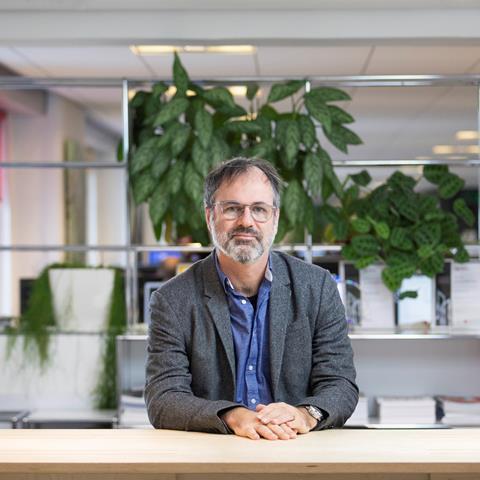
BDP’s Nightingale at the ExCeL Centre, in London, was the first of its kind and demanded prototyping to evolve requirements for medical processes such as “donning and doffing” – putting on and taking off PPE. The practice prototyped the standard components for the London project and rolled successful options out across others.
The wider use of this kind of prototyping has been accelerated by the Nightingale projects, and is helping clients understand their options, as Fairham outlines: “A client might say a bed space needs to be a certain size. We could say that would deliver 100 beds in a hospital but a compromise could deliver 150, and demonstrate that through prototyping. Suddenly you are in a dialogue where you are adding value through knowledge and innovation.”
This prototyping approach goes hand in hand with the practice’s use of technology to help people engage with design, which saw the company create QR code-accessible drawings of the 4,000-plus rooms of its new Grange University Hospital in Cwmbran.
Straight away there was almost an alliance approach, with people bringing the right skills to projects
Nick Fairham, BDP
Fairham describes the design and delivery process for the Nightingales as seamless, and something that is being enabled through digital engineering and Revit. The practice created a standard cubicle design, taking on board factors including space standards, work sequencing, materials specification, the equipment inside cubicles and their users. Now the firm is going further by looking at standardising processes and design components for new hospitals, taking on board efficiency, sustainability and whole-life value. Fairham explains: “With a digital engineering approach, 80% of a building is standardised – and that creates time and space to focus on the other 20%, the elements that have more engagement with the users and more risk.”
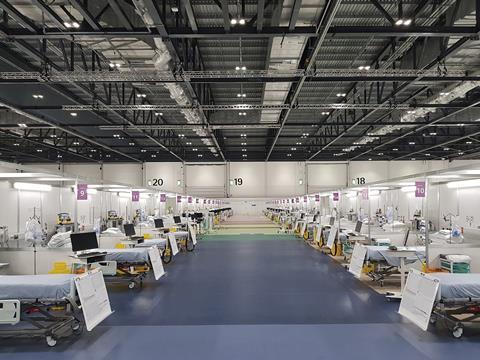
The practice is developing a suite of rooms via the New Hospital Programme, with the aim of ultimately creating around 70 standard rooms covering key elements. “It’s a performance-based specification, so doesn’t preclude market competition,” adds Fairham, who hopes this will ultimately become a tool for the industry.
With a digital engineering approach, 80% of a building is standardised – and that creates time and space to focus on the other 20%
Nick Fairham, BDP
Above all, BDP’s experience on these projects has given it a new mantra in the question: What’s best for the project? “If you think about that, it helps foster collaboration and innovation, and drives value for money. It’s something we’re using a lot more in terms of our terminology,” says Fairham. The projects saw unified teams working towards common goals. “One lesson we’ve learned is to have empathy for other people’s targets within a project,” he adds. The shift towards NEC contracting is indicative of broader recognition of the benefits of collaboration, Fairham points out, and he sees that shift continuing with the NEC4 alliance contract, which is being used by the partners of Hallam Alliance – including BDP – on projects for Sheffield Hallam University.
Supporting stakeholders
Many of those involved in the pandemic healthcare construction projects talk of the unusual degree of empathy and collaboration engendered among clients and stakeholders, designers, delivery team and the supply chain. While the emergency situation and the intensity of working relationships were unique to the pandemic, the achievements have provided some food for thought for the construction industry. “We always try to create a common goal, but working in the Nightingales gave a sense of purpose and buy-in right from the start of the project. The experience has made us more aware of the impact that can have,” says Cheryl Parsons, health sector director at Kier Group.
Working in the Nightingales gave a sense of purpose and buy-in right from the start of the project. The experience has made us more aware of the impact that can have
Cheryl Parsons, Kier Group
Kier worked on the 300-bed Bristol Nightingale, created in a conference centre at the University of the West of England in just 20 days by a team also including BDP and Faithful+Gould. The contractor relied largely on familiar ProCure22 processes, templates and communication routes as the foundation of its working approach. “We needed to fast-track every aspect of design and delivery, but underpin it with the certainty of tried and tested processes and procedures, to make sure we could deliver everything right first time,” says Parsons. The firm brought in an experienced team and a supply chain with the right attitude and behaviours, because, she continues, “The ability to problem-solve was key, to quickly assess solutions, particularly for their suitability for a clinical environment and their impact on the running of a live hospital.”
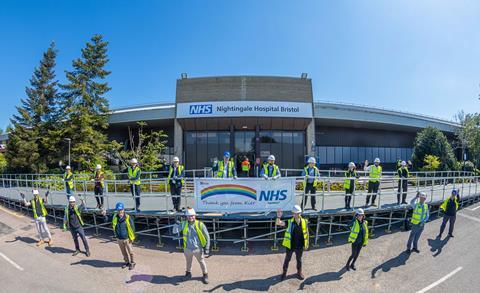
The Nightingales demonstrated the value of Teams and other digital platforms to provide ready means of communication and information-sharing, and to drive rapid decisions – which on the Bristol project often had to be made within an hour. “We used digital platforms to ensure the whole client, design, delivery and supply chain had access to information immediately. As soon as a decision was made, everybody saw everything,” says Parsons.
These tools are now helping not only to speed up decision-making but also to increase stakeholder engagement. “We’re currently using the approach across a number of live schemes,” she explains. “It allows people to contribute at a time that suits them, which is important as our healthcare clients are often balancing huge pressures of delivering clinical services while making decisions on project designs.”
We used digital platforms to ensure the whole client, design, delivery and supply chain had access to information immediately. As soon as a decision was made, everybody saw everything
Cheryl Parsons, Kier Group
Parsons says Kier’s experience has given a deeper appreciation of client needs and so how to drive improved decision-making and solutions. “A key lesson for us has been around supporting stakeholders so that they have the right level of information to make decisions and can understand their impact,” she explains.
She sees many elements of the Construction Playbook in the approaches promoted to deliver the Nightingales, including the use of digital and technology, collaboration and early engagement and integration with the supply chain. With materials supply lines disrupted during the pandemic, early supply chain engagement became pivotal and allowed the contractor to pursue product-led design solutions. BDP’s standardised design for the Nightingale – and the how-to guide it created alongside this – was also a game-changer, paving the way for the contractor to add its own innovations, such as in establishing a near-site prefabrication area for services and bedhead trunkings.
In all, six contractors worked across the Nightingales – and they worked collaboratively with each other too. “We were never in competition on individual programmes; we shared materials, managed the design team together and shared ideas. I’ve never seen anything like that before,” admits Parsons. “The experience highlighted the benefits of the ProCure22 approach for delivery and is potentially industry-changing. I hope we can continue to build on it.”
Fundamentally changing the business approach
Pandemic projects have had a significant impact on modular solutions provider Premier Modular. “We’ve fundamentally changed our business approach and become a slicker business because of what we’ve learned,” says managing director David Harris. The firm was involved in two initiatives: the Nightingale Exeter and provision of 50 standalone covid test sites for locations from Portsmouth to Inverness. For the former, the firm worked with Bam Construction, Arup and T Clarke, providing a 1,700m2 modular building that wrapped around a former superstore to double its size.
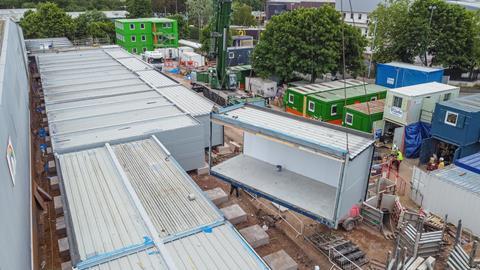
To speed up manufacture for this and other projects during the pandemic, Premier increased work shifts in its production facility in east Yorkshire, recruiting an extra 50 staff, many of whom are still employees. The consequences of this and other changes were revealing. “We now believe we can do about 20% more than we thought we could do through our factories, because we’ve had to look at how we can change shift patterns and how we can change the manufacturing flow to give more output. It has given us further confidence in our capacity,” says Harris.
We’ve fundamentally changed our business approach and become a slicker business because of what we’ve learned
David Harris, Premier Modular
Here, as in other pandemic projects, accelerated delivery also came from having clients and key stakeholders collaborating and empowered to make decisions on the spot, altering decision-making from a sequential to a parallel process. “One of the biggest issues for us is not the design but the people making decisions,” says Harris. “If you look at our business, we’re very flexible and well set up with lean manufacturing techniques, so once a decision is made we can manufacture very quickly. It is a matter of getting decisions early enough to get on and build.
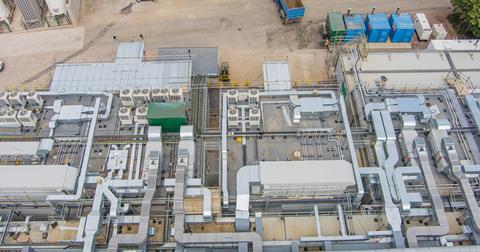
“There’s no reason why this can’t happen in normal life. It’s less painful for everybody,” he continues. The firm now uses this project example to promote the approach to clients, although this kind of streamlined decision-making, as advocated by the Construction Playbook, still presents challenges for many public sector clients, Harris believes.
I would say we probably secure 70%-80% of our work now at a much earlier stage than we would have two years ago
David Harris, Premier Modular
Early engagement is critical for Premier and for offsite construction generally. “I would say we probably secure 70%-80% of our work now at a much earlier stage than we would have two years ago,” says Harris. It enables the company to add value in early design stages, which could include recommending a hybrid build solution, as used at Nightingale Exeter. “That showed different skillsets could work together and that the best solutions are not necessarily all traditional or all modular,” Harris explains. “We’re not precious about saying the whole scheme should be modular. These things have been quite eye-opening for us.”
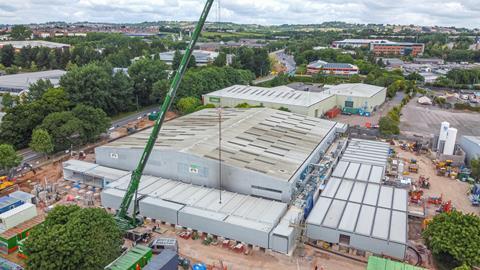
Offsite construction has been given a boost by both covid and Brexit-related materials and labour supply issues. “If you look back to covid, we didn’t miss a single day in the factory and all our sites continued. I think both clients and contractors have now realised the efficiencies they can get from offsite,” says Harris. “There has been a mindset change, where it is no longer about looking at traditional or modular construction, but at what delivers the best solution.”
Doing it right all the time
From design for manufacture to soft landings, the processes that were applied to deliver the Rosalind Franklin Laboratory in Royal Leamington Spa weren’t new, but they were best practice and, says Gary Clark, regional leader of science and technology at project architect HOK, they were done right all the time. “The project has shown what is possible if everybody is putting their shoulder in,” he says.
You need everybody to buy into it and accept there is going to be a no-blame culture
Gary Clark, HOK
The megalab for processing covid-19 test samples was created in an existing warehouse by a project team that included Mace, WSP, Hoare Lea, GMP and Balfour Beatty, with the British Army Royal Engineers working with the NHS to facilitate delivery. Cutting a 30-month programme to less than a year meant accelerating the design and procurement process, with RIBA stages being overlapped. “Normally it’s very difficult to broach that,” says Clark. “You need everybody to buy into it and accept there is going to be a no-blame culture.”
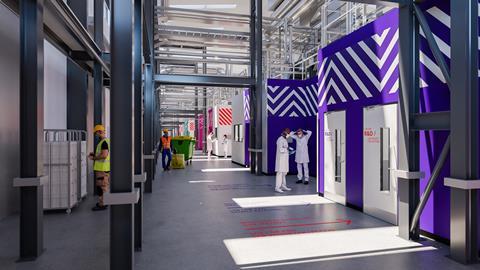
A project charter set the culture, calling for openness and collaboration, as well as respectful challenging. “Because of the speed at which we were operating, you had to call out blockers – that could be people in terms of attitudes or the system itself – and there had to be root cause analysis to see what the blocker was. In the classic football analogy you had to play the ball and not the person,” Clark explains. Root cause analysis and five-whys problem-solving were among the techniques deployed by Major Gary Jackson of the Royal Engineers to drive decision-making and were in themselves key lessons for Clark.
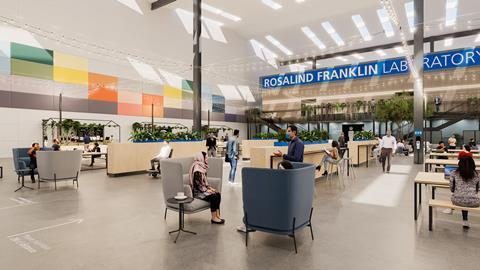
In practice calling out blockers was stressful, Clark recalls, but adds, “It was a national emergency and that galvanised people to put aside personal issues.” The levels of collaboration achieved on pandemic projects often proves more elusive within everyday construction, as Clark acknowledges. “I start every project with the same mindset of being open and collaborative,” he says. “But through the project everybody, especially in moments of stress, retreats into their own silos – and that’s where behaviours default and you end up in dispute.” One solution, he believes, could lie in greater adoption of project-based insurance in the UK, to enable project partners, to “work together as a team, without having to worry about your insurance premiums”.
“We’ve got to be honest and frank with each other,” he continues. “We did that on this project – we had a safe space to call people out and challenge each other in a collaborative way. Until we have open conversations where we can be constructive, we are doomed to repeat the same mistakes.” It is perhaps the demonstration of interpersonal skills, such as empathy, openness and honesty, that provides the greatest lesson from the pandemic projects – and one that may also be most challenging to replicate in the future.
Downloads
NHS Nightingale_Instruction Manual
PDF, Size 2.21 mb


























No comments yet